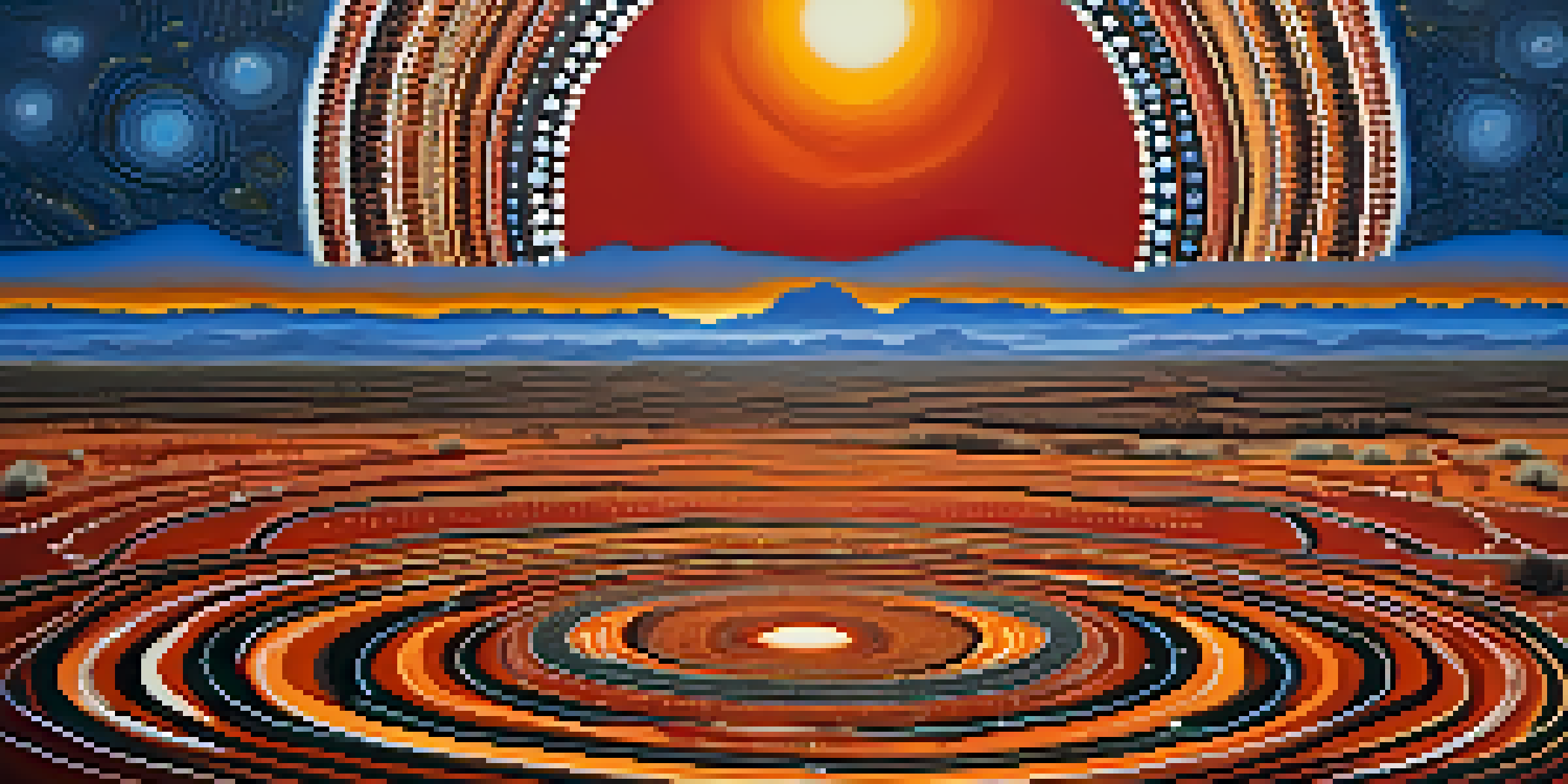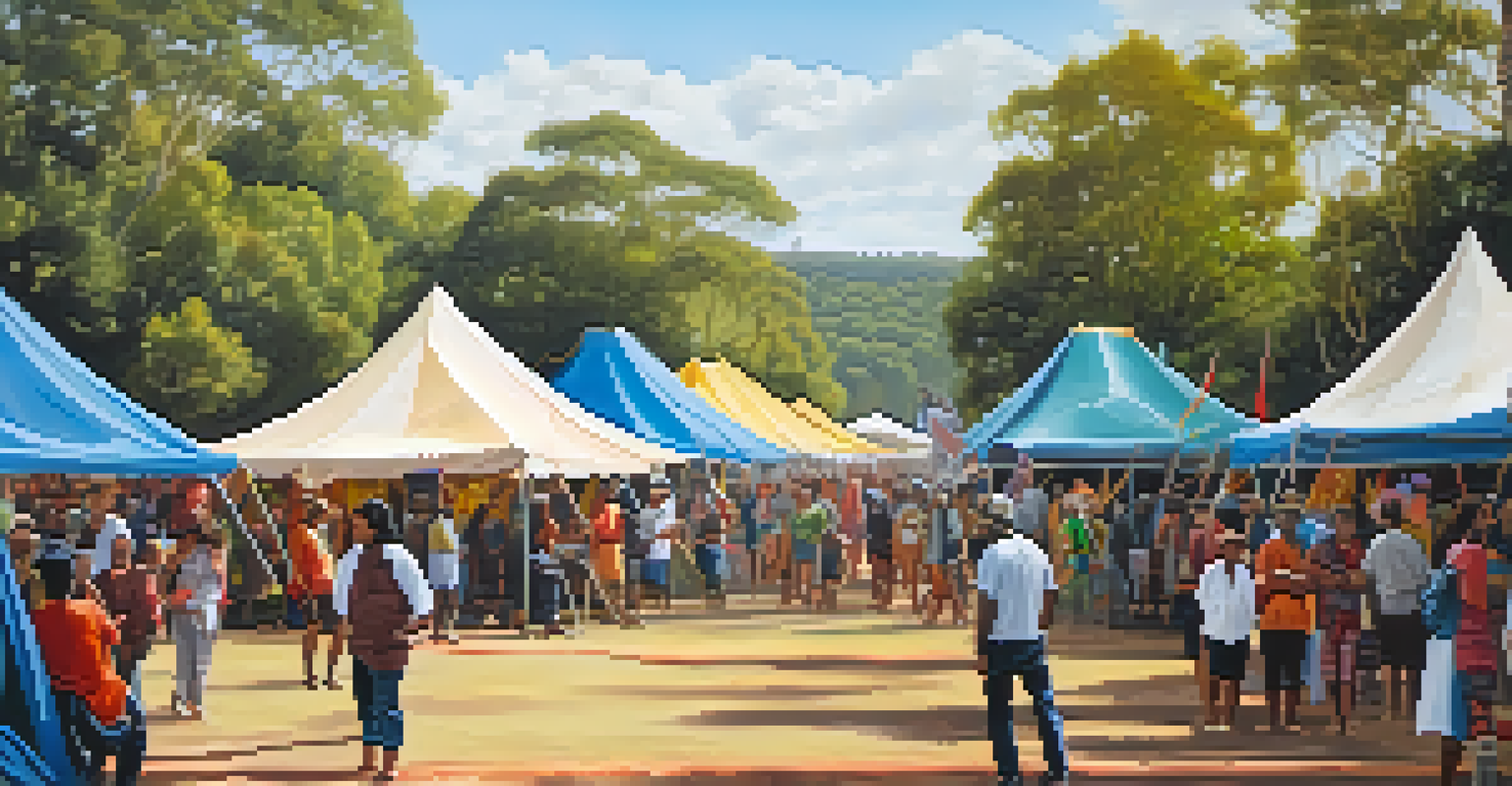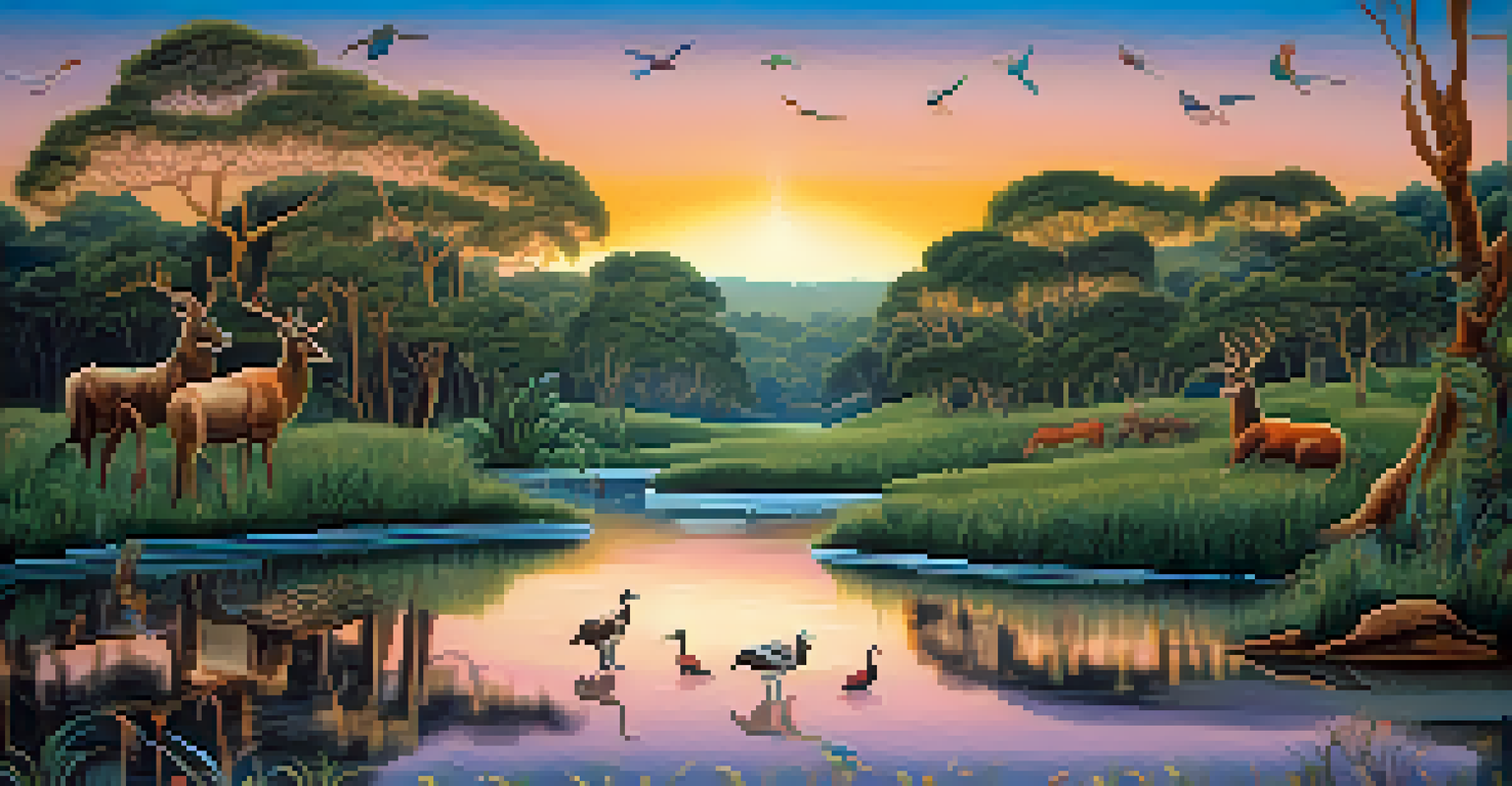Exploring Art and Ritual in Australian Aboriginal Culture

Understanding the Importance of Art in Aboriginal Culture
Art is woven into the fabric of Aboriginal culture, serving as a vital means of expression and communication. It encapsulates stories of the Dreamtime, the spiritual beliefs and ancestral connections that define Aboriginal identity. Through art, communities convey cultural narratives, historical events, and environmental stewardship, making it a living history that resonates across generations.
Art is the most beautiful of all lies.
For Aboriginal people, art is not just a visual experience; it's a language that transcends words. Each piece—whether it’s a painting, carving, or weaving—carries deep meanings and connections to the land, ancestors, and the cosmos. This art serves as a reminder of their rich heritage, inviting both community members and outsiders to engage in a shared understanding of their world.
Moreover, art plays a crucial role in ritual practices, often accompanying ceremonies that celebrate life events, seasonal changes, and spiritual beliefs. These artistic expressions foster a sense of belonging and identity among Aboriginal people, reinforcing their connection to culture, community, and the land they have inhabited for thousands of years.
The Role of Ritual in Aboriginal Life
Rituals in Aboriginal culture are integral to maintaining spiritual and communal bonds. They are performed during significant life events, such as births, initiations, and funerals, providing a structured way to honor traditions and connect with the ancestors. These rituals often include intricate dances, songs, and the use of traditional instruments, creating a multi-sensory experience that reinforces cultural identity.

Moreover, rituals are not limited to personal milestones; they also celebrate the changing seasons and the cycles of nature. For instance, ceremonies such as the corroboree bring communities together to reflect on their relationship with the land and its resources. During these gatherings, stories are shared, songs are sung, and dances are performed, all serving to educate and engage younger generations about their heritage.
Art as Cultural Expression
Aboriginal art serves as a vital means of communication, encapsulating cultural narratives, historical events, and spiritual beliefs.
In essence, rituals serve as a bridge between the past and the present, allowing individuals to connect deeply with their ancestry. They affirm the importance of community, reminding participants that they are part of a larger narrative that has existed long before them and will continue long after.
Dreamtime Stories: The Heart of Aboriginal Art
At the core of Aboriginal culture lies the Dreamtime, a complex worldview that encompasses creation stories and spiritual beliefs. These narratives explain the origins of the land, animals, and people, and they are often depicted through vibrant artwork. Each story is unique to different cultural groups, illustrating the diversity of Aboriginal experiences across Australia.
The purpose of art is not a rarified, intellectual distillate; it is life, intensified, brilliant life.
Dreamtime stories serve multiple purposes; they teach moral lessons, explain natural phenomena, and guide social behavior. For example, a story about a kangaroo might illustrate how it came to inhabit the land, while also imparting lessons about respect for nature and community. Artists draw inspiration from these tales, using symbols and motifs that resonate with their specific cultural teachings.
By embedding Dreamtime stories in their artwork, Aboriginal artists ensure that these narratives endure, passing wisdom from one generation to the next. This storytelling approach not only preserves cultural identity but also invites viewers to engage with and reflect on these timeless teachings.
Symbolism in Aboriginal Art: A Language of Its Own
Aboriginal art is rich in symbolism, with each line, dot, and color carrying specific meanings. For example, concentric circles often represent waterholes, while wavy lines may signify travel paths. This symbolic language allows artists to convey complex ideas and connections to the land without relying on words, making their art a powerful means of communication.
Understanding these symbols requires knowledge of the cultural context in which they were created. Each Aboriginal group has its own set of symbols that reflect their unique stories and environment. This diversity enriches the overall tapestry of Aboriginal art, making it a fascinating subject for both artists and those who appreciate their work.
Rituals Connect Communities
Rituals in Aboriginal culture reinforce spiritual and communal bonds, celebrating significant life events and the natural cycles of the land.
Furthermore, the use of symbolism extends beyond visual art; it permeates rituals and oral traditions as well. By recognizing and interpreting these symbols, individuals can gain deeper insights into Aboriginal culture and the worldviews that shape it, fostering a greater appreciation for its complexity and beauty.
Contemporary Expressions of Aboriginal Art
While traditional forms of Aboriginal art remain vital, contemporary artists are also pushing boundaries and exploring new mediums. From digital art to installation pieces, these artists are blending ancient techniques with modern practices, creating works that resonate with both local and global audiences. This evolution reflects a dynamic culture that adapts while staying rooted in its heritage.
Contemporary Aboriginal art often addresses social issues, reclaiming narratives and challenging stereotypes. Artists use their platforms to advocate for Indigenous rights, environmental concerns, and the impact of colonization. By doing so, they not only preserve their culture but also engage in important dialogues that resonate beyond their communities.
This fusion of tradition and innovation highlights the resilience of Aboriginal culture. It shows that while the past is honored, there is also a vibrant future, with artists continuously redefining what it means to be Aboriginal in today's world.
Art Festivals: Celebrating Aboriginal Creativity
Art festivals play a pivotal role in celebrating and showcasing Aboriginal creativity. Events like the Darwin Aboriginal Art Fair and the National Indigenous Art Fair provide platforms for artists to display their work, connect with collectors, and share their stories with a broader audience. These festivals not only promote artistic expression but also foster community spirit and pride.
During these events, attendees can engage directly with artists, learning about their techniques and the cultural significance behind their pieces. Workshops and demonstrations often accompany exhibitions, allowing visitors to experience firsthand the intricacies of traditional art forms. This interactive approach deepens the understanding and appreciation of Aboriginal art and culture.
Symbolism in Aboriginal Art
The rich symbolism in Aboriginal art conveys complex ideas and connections to the land, forming a unique language that transcends words.
Additionally, art festivals serve as a form of economic empowerment for Aboriginal communities. By creating opportunities for artists to sell their work, these events contribute to sustainable livelihoods and support cultural preservation efforts. They highlight the importance of art as both a cultural treasure and a viable economic resource.
The Future of Aboriginal Art and Culture
As we look to the future, the preservation and promotion of Aboriginal art and culture remain vital. Education plays a significant role in this endeavor, as schools and community programs increasingly incorporate Aboriginal perspectives and histories into their curricula. This helps to foster respect and understanding among younger generations, ensuring that cultural legacies continue to thrive.
Moreover, the rise of digital platforms offers new avenues for Aboriginal artists to reach global audiences. By leveraging social media and online galleries, they can share their stories and artwork with people far beyond their local communities. This not only enhances visibility but also encourages appreciation for the diversity and richness of Aboriginal culture.

Ultimately, the future of Aboriginal art and culture lies in the hands of both Indigenous peoples and the wider community. By supporting and celebrating these artistic expressions, we contribute to a more inclusive narrative that honors the past while embracing the possibilities of tomorrow.